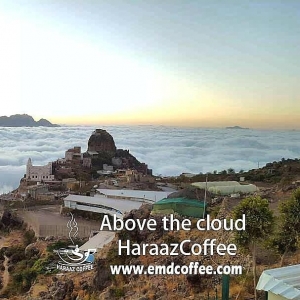Super User
Al-Emadi For Trading and Export - Haraaz Coffee
SINGLE ORIGIN - YEMEN HARAAZ FRESH AL EMADI PEA BERRY - ORGANIC COFFEE
Rich, bold, cocoa, chocolate, red fruit & cherry flavors, smooth texture & winey tongue coating mouthfeel.
Industry Review: The Coffee Attendant
Roast: Dark Medium
Processing: Natural & Dried on Raised Beds
Altitude: 1900 - 2440 M.A.S.L.
Harvest: October to March 12 oz. Handcrafted Organic Coffee

There's every reason to believe that Yemen is going to be the coffee-producing country everyone is talking about—and it's about time, since it is the second-oldest coffee culture in the world, and possibly the origin of the beverage we know, recognize, and love as true coffee.
Yemen has been cultivating coffee plants since at least the 16th century, if not earlier, but coffee hasn't always been the first thing to come to mind with mention of the place: The country has been during a brutal civil war since 2015, and its other seemingly most-newsworthy characteristics are its water impoverishment, increasing dependence on the narcotic plant qat, and appearance on the U.S.A.'s recent "Travel Ban." Naturally we're interested in Yemen as a global neighbor, but we at Out Of The Grey Coffee are also interesting in how we can make a difference to the Yemeni people by doing what we do best: Sourcing, buying, selling, and proselytizing about the best coffees we can find.
The ways that Al-Ezzi does business in Yemen's coffee market is substantially different from the norm. Here are the main points that make their model appealing to us.
Farmers are paid a high base price for bringing their coffee to Al-Ezzi's own or participating receiving stations and are given premiums for coffees that meet certain standards of moisture, quantity, and quality selection.
Coffee farmers are voluntarily issued ID cards, which are used not only as a point of pride and respect but also to keep track of their deliveries and ensure proper, timely payment. Each farmer's individual contributions are meticulously recorded, which means the coffees are traceable down to individuals—highly unusual in a country where the average farmer produces less than 100 kilos of cherry.
Fresh, ripe red cherries earn an additional premium over dried cherries (how coffee is traditionally sold at market), as buying fresh cherries allows Al-Ezzi to ensure ripeness and quality before drying, and to control the drying process for evenness.Haraaz Fresh AL EMADI Pea Berry is special because it is so rare. Only about 5% of coffee beans are pea berry beans. Most coffee beans are born twins.
Within each cherry on the coffee tree, two beans are grown side by side, resulting in the flat face of most beans. Pea berries, however, occur when only one of the two seeds are fertilized, growing on its own without anything to flatten it.
They are individualists, the lone guns of the coffee world. Because of their independence, each pea berry is infused with all the assets normally reserved for two beans. So, what do we know about this interesting corner of the world, which sits across a narrow strait from Africa, at the Bab el Mandeb, the "Gate of Grief" which connects the Indian Ocean to the Red Sea? Some believe that Yemen and Ethiopia were once part of the Kingdom of Sheba, of the Queen of Sheba fame. It may be that she was from Yemen itself, since many believe that the kingdom's capital was located there.
But our interest is in Yemeni agriculture, and, its coffee. Only 3% of Yemen's land is considered arable, and just under a quarter of that is dedicated to coffee production. Coffee is second to qat as a cash crop. (qat is a popular mild stimulant, whose leaves are chewed). Coffee is produced on approximately 99,000 small family holdings, which means the average plot of coffee is grown on just under three fourths of an acre. That acreage is often very steep as most coffee is grown in the mountains on terraces carved out of the precipitous hillsides. Yields are low.
he small size of the farms, scarcity of water and poor cultivation techniques hamper production. Many of the coffee farms are cultivated by tenant farmers, deterring investment as well in terracing, water conservation, and other improvements. The various cultivars of coffea arabica grown in the mountains are some of the oldest known, and most are known only in Yemen. Coffee from Yemen has been prized for centuries.
It was once one of the top producers in the world, and its coffee, exported from the old Yemeni port of Mocha, is the original Mocha in Mocha Java, when traders blended Middle Eastern coffee with the Dutch coffee from Southeast Asia. Yemeni coffee is scarce in contrast with other coffee producing nations; Yemen consumes almost three quarters of its production at home, and 55% of what it does export goes to its wealthy neighbor to the north, Saudi Arabia.
*Courtesy: Out of the Grey website
Out of the Grey – Haraaz Fresh Al Emadi: Background information
Beans: Haraaz Fresh Al Emadi, Pea Berry, Haraaz Sharqi, Yemen.
Shop: Out of the Grey, webshop, Pennsylvania, USA.
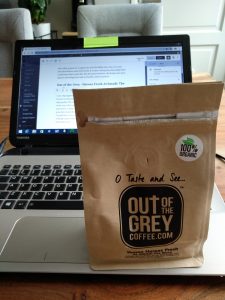
In the mountains of Yemen grows some of the most beautiful coffees in the world. This Yemen Haraaz Fresh Al Emadi is grown at an altitude between 1900 and 2240 meters above sea level. The Al Emadi Co-op consists out of 500 farmer families and works together with the Al Ezzi washing mill that handles a solely natural process. Located in the Western Haraaz Sharqi region are numerous coffee plantations that used to function as Qaat farms (a natural narcotic that is popular in the region. Nowadays the Al Emdai Co-op puts all their effort in convincing the farmers to remove the Qaat plants and start growing coffee.
Out of the Grey – Haraaz Fresh Al Emadi: Opening the package.

The Out of the Grey package comes with a degassing valve and a Ziplock. The standard size is 12 .oz which translates roughly to 340 grams of coffee. On the front of the package is some information about the coffee such as the region, the name of the coffee, the variety and tasting notes.
When opening the package there is a sweet honey scent that is accompanied by the aroma’s of cookie and red fruit. The coffee is a dark roast and has an equal look to it. The pea berry beans are all cute and small with little to no defects.
As I start grinding the coffee on my Fiorenzato F64 Evo, the aroma’s of chocolate and vanilla come forth as well. This all creates a bouquet of aromas on the nose.
Out of the Grey – Haraaz Fresh Al Emadi: The Tasting.

I start brewing the espresso and see the thick, syrupy and brown marbled coffee flow into the cups. The aroma’s fill the room and I take a quick sip of the espresso. The first thing that comes to mind is the winey mouthfeel of this coffee. I slurp oxygen inside, swirl the coffee in my mouth before swallowing and notice a sourness on the sides of my tongue. An explosion of bright acidity can be noticed in my mouth when the coffee is still hot. I take another sip and taste the flavors of cocoa, dark chocolate and hints of cherry fruit and red fruits. These flavors go perfectly with the winey mouthfeel and acidity of this coffee. The aftertaste is fruity sweet with cocoa and lingers for quite a long time.
This coffee is great on a Cappuccino and Flat White since the cocoa and chocolate flavors come forth nicely. It creates a strong chocolate/milk/coffee combination that I quite like. Not all is great however: the fruity notes have faded to the background and are hardly noticed anymore.
Out of the Grey – Haraaz Fresh Al Emadi: The verdict.
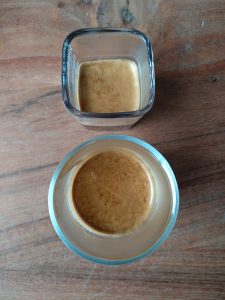
I am a big supporter of Yemen coffee; buying Yemen coffee helps the local farmers in financial aid in times of war and the coffee from Yemen is of a high quality. The same go’s for the Haraaz Fresh Al Emadi Pea Berry by Out of the Grey. This coffee will bring rich notes of cocoa, chocolate, red fruit and cherry to your cup. These cocoa and chocolate flavors also make for a great latte based drink such as a Cappuccino or Flat White.
I would like to focus a little more on the winey mouthfeel and the explosion of bright acidity when the coffee is still hot: this is really nice! Well done Out of the Grey!
Above The Cloud HaraazCoffee
Haraaz Yemen is the world summit where coffee can grow. Coffee beans are hard due to low water content. 2440-2500m asl
ٍٍSuccess Story - Farmer Burhan Alqeyari
Farmer Burhan Alqeyari, one of the most active coffee Growers in Eastern Haraaz. He and some relatives' helping hands have built his own water reservoir in a perfect timing before rain season. His efforts was rewarded plenty of payback in the form of good coffee harvest.
Well done and Allah bless you, Burhan
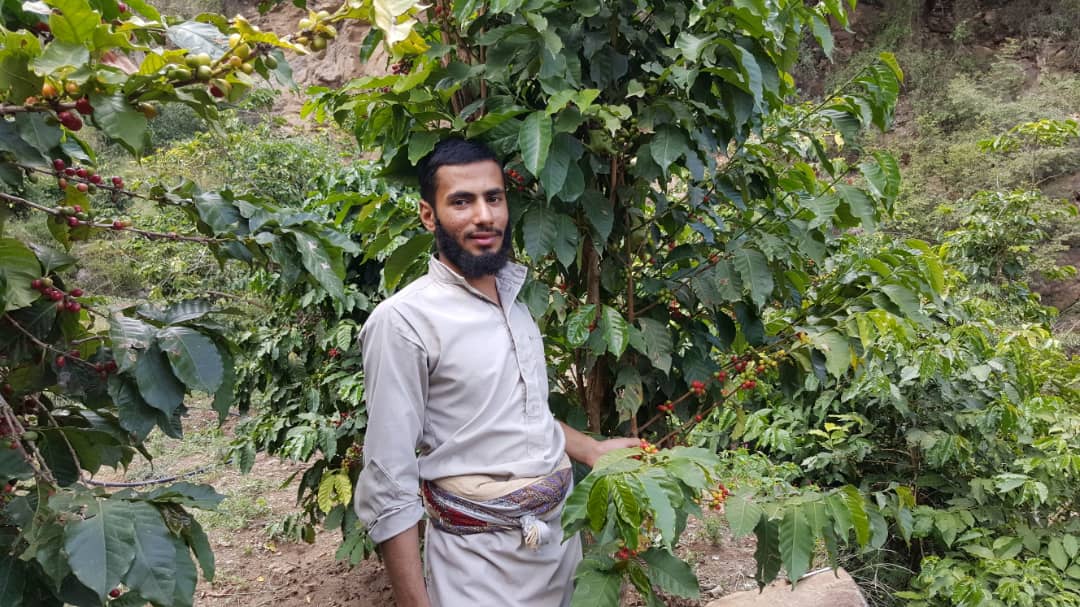
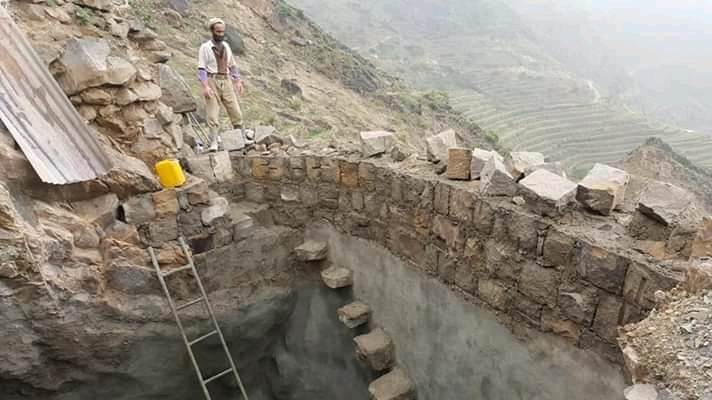
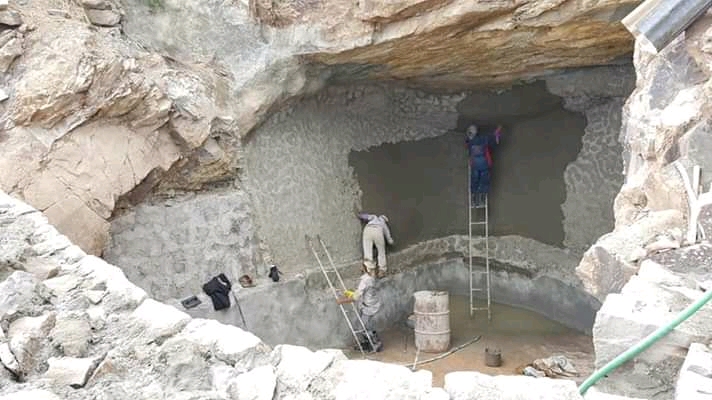
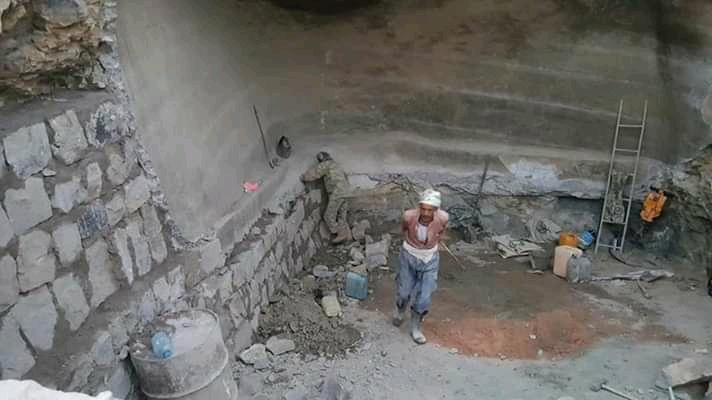
Is this village in Haraz Yemen at 2460 metres above sea level the world's summit of coffee farming?
Is this village in Haraz Yemen at 2460 metres above sea level the world's summit of coffee farming?
— Wesam Qaid (@Wesamqaid) October 8, 2019
At this elevation we can expect spicy, floral or fruity flavours. I recently cupped several Harazi coffees with green apple, strawberry and aniseed notes...delicious ?? pic.twitter.com/xtu27pN2nu
Is this village in Haraz Yemen at 2460 metres above sea level the world's summit of coffee farming?
Is this village in Haraz #Yemen at 2460 metres above sea level the world's summit of #coffee farming?
— Wesam Qaid (@Wesamqaid) October 8, 2019
At this elevation we can expect spicy, floral or fruity flavours. I recently cupped several Harazi coffees with green apple, strawberry and aniseed notes...delicious ?? pic.twitter.com/xtu27pN2nu

